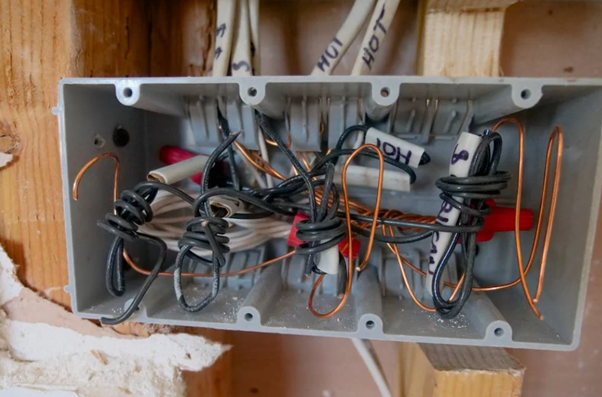Have You Mastered the Balance Between Immediate Fleet Costs and Long-Term Value?
It is possible to have a low total and a high long-term value for your fleet, but it requires carefully analyzing your annual expenses.
How can you reduce your fleet total cost of ownership while balancing immediate spending and long-term investments?
What contributes to the full price of owning work vehicles, and how can you optimize these to keep direct fees low and long-term value high?

What Creates a Fleet Total Cost of Ownership?
Balancing your immediate spending and long-term value requires understanding the core factors that contribute to fleet’s total cost of ownership. There are two general types of expenses — fixed and operating.
A fixed cost is a static amount of money that does not change or fluctuate over time. For example, the price of a commercial van or the monthly lease payment on it is a fixed cost. Insurance and taxes are also considered fixed costs. All these expenses are consistent — regardless of how much use each of your vehicles gets, you will still need to pay your fixed fees every month.
Interestingly, vehicle depreciation is also considered a fixed cost. The value of your vehicle can decrease faster if a driver gets into an accident or the machine suffers significant body damage.
However, the value of any fleet vehicle generally decreases at a regular monthly rate. While this is considered an expense, you can claim a tax deduction for miles driven in business vehicles, which can help recoup some of that spending.
Operating or variable costs are less predictable. This type of expense is anything that fluctuates based on activity. For example, driving on roads with toll booths will add toll fees to your operating pricing.
Likewise, repairs and maintenance are also usually considered operating expenses since they change depending on usage.
Usually, the most expensive operating cost is fuel. More fuel-efficient vehicles can significantly reduce fleet total cost of ownership by lowering fuel expenses. On the other hand, if you have fuel-intensive machinery, fuel can quickly consume a third or more of your TCO.
Immediate vs. Long-Term Fleet Costs
If you want to improve your fleet total cost of ownership, you must find a balance between immediate spending and long-term investments. The long-term value of your fleet depends on how well you maintain it over time, which can get expensive. If you only have so much money to operate your fleet each month, it can be challenging to balance immediate needs with expenses that will improve the overall value of your vehicles.
A few strategies can help. First, try to choose highly fuel-efficient machines if possible. This is a great opportunity to minimize operating costs if you’re still building your fleet. Fuel will likely be your largest expense, so reducing it frees up more funds to invest in long-term upgrades.
Next, consider how you can increase vehicle value and address immediate issues simultaneously. For example, adding internal accessories to commercial vans can resolve messes, clutter and damage during transit. Features like interior lighting strips can improve safety as well as ease of use. Thanks to the additional convenience, these accessories will make the van more valuable to current and future users.
Of course, there are sometimes situations where you may need to make an immediate spending decision. If one of your drivers gets into an accident and a machine is damaged, it can create a significant direct cost. Is it worth it to repair the van or should you simply invest in a new one?
In scenarios like this, consider a few main factors to determine whether the immediate fee contributes to long-term value. Factor in the age of the vehicle and the extent of any damage — for example, repairs are probably more economical in the long run if it’s only a few years old and the damage is relatively minor.
On the other hand, a van that is already seven to 10 years old or more might not be worth pouring more money into. Accidents and regular wear and tear contribute to a vehicle’s depreciation, so investing more in an old or battered one is not usually wise since it is no longer a valuable asset. At that point, purchasing a new machine or a trade-in would decrease your fleet total cost of ownership over time.
How to Maximize Long-Term Value
You can minimize your fleet’s TCO and maximize long-term value through strategic maintenance and monitoring. The easiest way to lower TCO is minimizing spending you can control, mainly operating costs like fuel consumption. You can also reduce fixed costs,like maintenance expenses through good vehicle care.
Technology can help with this process — for example, you can use fleet telematics sensors to track key metrics for each of your vehicles, such as performance and fuel efficiency. This data will help you identify which machines or drivers consume the most fuel. Behaviors like excessive idle time can waste large amounts of gas, so eliminating those habits is a great way to reduce operating costs and TCO.
Likewise, using predictive maintenance strategies will reduce your fleet’s maintenance prices and extend the life of your vehicles, increasing long-term value. IoT telematics sensors can help with this, too, by monitoring mechanical health and performance. By analyzing this data, you can catch developing issues early and perform small tune-ups to prevent a breakdown.
Maximizing the Value of Your Fleet
A wide array of expenses contribute to your fleet total cost of ownership, from vehicle leases to insurance to fuel consumption. By carefully optimizing certain fees, you can minimize your total owning prices. Keeping TCO low requires carefully considering immediate spending and weighing their long-term value. Remember — every expense on a vehicle should be an investment.















